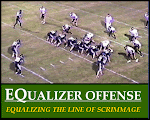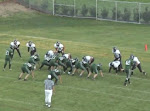A lesson from sports champions: The power of intention changes reality. Your health. Your career. Your world.
by Lynne McTaggart
Seven weeks before Muhammad Ali met World Heavyweight Champion George Foreman for their “rumble in the jungle” at Kinshasa in 1975, Ali practiced his punches as if he couldn’t care less, taking a few desultory swipes at his sparring partner as if distractedly popping a bag. Mostly he’d lie against the ropes and allow his opponent to pound away at him from every angle.
Ali In Manila
In the latter years of his boxing career, Ali spent much of his training time learning how to take punches. He studied how to shift his head by just a hair a microsecond before the connection was made, or where in his body he could mentally deflect the punch so that it would no longer hurt. He was not training his body to win. He was training his mind not to lose, at the point when deep fatigue sets in around the 12th round and most boxers cave in. Ali’s most important work was being done, not in the ring, but in his armchair. He was fighting the fight in his head.
This is how Ali remained “the greatest.” He drew upon the power of intention for strength in the ring. And I think we could all learn something from him. After poring over data from many people who use the power of intention successfully in their own lives, I believe the art of intention can enhance our performance in many activities, and even affect our health.
The most instructive examples of the art of intention come from sports, not only from the greatest boxer of all time, but other top sportsmen and women. Athletes of all varieties now routinely perform what is variously termed “mental rehearsals,” “mental practice,” “implicit practice” or even “covert rehearsal.” Focused intention is now deemed essential for star athletes to improve their games. Swimmers, skaters, weightlifters, basketball and football players all employ intention to enhance their levels of performance. It is even used in leisure sports, such as golf and rock climbing.
Any modern coach of a competitive sport routinely offers training in mental rehearsal, which is considered the decisive element separating the elite athlete from the second division player. Soccer players on national teams, for instance, are more likely to use imagery than those at the provincial or local levels. Virtually all Canadian Olympic athletes use mental imagery.
Ali was a master of intention. He developed a set of mental skills, which heightened his performance in the ring. Before a fight, Ali used every self-motivational technique: affirmation; visualization; mental rehearsal; self-confirmation; and perhaps the most powerful epigram of personal worth ever uttered: “I am the greatest.” Ali (who began boxing with the name Cassius Clay) made public statements of his intentions. His constant barrage of seemingly innocuous rhyming couplets was a highly specific intention in disguise: Archie Moore is sure to hug the floor by the end of four. Or: Now Clay swings with a right. What a beautiful swing! And the punch knocks the Bear clear out of the ring. Before a fight, Ali repeated these little rhymes like mantras—to the press and to his opponent. Sometimes he even used them in the ring.
When they met in Kinshasa, capital of the African nation of Zaire (now Democratic Republic of the Congo), Foreman was seven years younger than Ali and the dominant fighter in the ring. Just two months earlier, he’d left Ken Norton for dead with five blows to the head after only two rounds. Nevertheless, in the weeks before the fight, when reporters pressed Ali about the 2-to-1 odds against him, Ali had rewritten the history of the Norton-Foreman fight, which he repeated, virtually verbatim, to every journalist who interviewed him. “He's got a hard-push punch but he can't hit,” he’d say, punching the air in front of the reporter’s nose. “Foreman just pushes people down. He just got slow punches, take a year to get there. You think that's going to bother me? This is going to be the greatest upset in the history of boxing.”
Ali’s intention came to pass in Kinshasa, as Foreman stayed down for the count in the 8th round.
Psychologist Allan Paivio, professor emeritus of the University of Western Ontario, first proposed that the brain uses “dual coding” to process verbal and non-verbal information simultaneously. Mental practise has been shown to work as well as physical practise for patterns and timing in various activities. Paivio’s model has been widely adapted to help athletes with motivation or in learning or improving a certain set of skills. The techniques involved in mental rehearsal have been exhaustively studied and written about in scientific literature and popular publications, and their credibility was given a further boost in 1990, when the National Academy of Sciences examined all the scientific studies to date on these methods and declared them effective.
Although athletic mental rehearsal is often incorrectly seen as synonymous with visualization, “visualization” implies that you observe yourself in the situation, as if watching a mental video that features you. You are seeing yourself through another pair of eyes. Although this may be useful in other areas of life, visualizing oneself from an external perspective in a sports event can hamper athletic performance. Mental rehearsal also differs from positive thinking; happy thoughts on their own don’t work in competitive sports.
The most successful mental imagery imagines the game from the athlete’s perspective as though he or she is actually competing. It amounts to a mental trial run. The most successful athletes break down the performance into tiny component parts and work on improving specific aspects. They concentrate on the most difficult moments and work out good coping strategies—how to stay in control in the face of adversity, such as a pulled muscle or an umpire’s adverse call. Like Muhammad Ali, star athletes learn how to block out images representing doubt. If an image of difficulty or loss pops into their heads, they become extremely adept at changing the internal movie, quickly editing the scene to imagine success.
They engage all their senses in their mental rehearsal. They hear it, feel it, smell it and taste it—the ambience, the competitors, the sweat of their bodies, the applause. Of all the sensations, the most vital in sports appears to be mentally rehearsing the “feel,” or kinesthetic visualization. The more experienced the athlete, the better he or she is at kinesthetic “visualization.” Champion rowers are most successful when they can mentally “feel” every part of the race, from blade of the oar to the strain on their muscles.
The most important intention of all is to rehearse the victory, which appears to help secure it. Successful competitors rehearse their own feelings, particularly their elation and emotional response to winning: the reactions of their parents, the prizes or medals, the post-match celebration and the residual rewards. They imagine that the crowd is cheering for their performance alone.
A year after his match against Foreman, Muhammad Ali made, once more, masterful use of intention to beat Joe Frazier in the Philippines, in perhaps the most brutal and stunning display of boxing in history. He created a voodoo doll. Ali turned his ferocious opponent into a tiny rubber gorilla, which he carried around with him in his top pocket, taking a swipe at it with his right from time to time for the television cameras: “It’s gonna be a thrilla and a chilla and a killa when I get the gorilla in Manila.” By the time Frazier entered the ring, he’d been reduced in his own mind to something less than human.
Besides these verbal intentions, Ali carried out mental intentions this time by rehearsing every moment of the fight in his head: the fatigue in his legs, the sweat pouring off his body, the pain to his kidneys and bruises on his face, the flash of the photographers, the exultant screams of the crowd, even the moment when the referee lifted his arm in victory against Frazier. He sent an intention to his body to win and his body responded by following orders.
But how can simply thinking about a future performance actually affect the day of the event? Some clues come from intriguing new brain research with electromyography (EMG). EMG offers a real-time snapshot of the brain’s instructions to the body—when and where it tells it to move—by recording every electrical impulse sent from motor neurons to specific muscles. Ordinarily, EMG offers doctors a useful tool with which to diagnose neuromuscular disease. But EMG has also been employed to solve a scientific conundrum: whether the brain differentiates between a thought and an action. This question was tested by wiring a group of skiers to EMG equipment while they were carrying out mental rehearsals. As the skiers mentally rehearsed the downhill runs, the electrical impulses heading to their muscles were just the same as those they used to make turns and jumps when they were skiing the run. The brain sent the same instructions to the body whether the skiers were simply thinking of a particular movement or actually carrying it out. Thought produced the same mental instructions as action.
Research with another machine, the electroencephalogram (EEG), has shown that the electrical activity produced by the brain is identical, whether we’re thinking about doing something or actually doing it. In weightlifters, for instance, EEG patterns in the brain that would be activated to lift several hundred pounds are also activated by simply imagining lifting that weight. Just the thought is enough to produce the neural instructions to carry out the physical act.
Based on this research, scientists have posited some interesting theories about how mental rehearsal actually works. One school of thought proposes that mental rehearsal creates the neural patterns necessary for the real thing. Operating as though the brain were simply another muscle, these rehearsals train the brain to facilitate the moves more easily during the actual performance. When an athlete performs, the neurotransmitters that signal to the muscles along a particular pathway are stimulated and the chemicals that have been produced remain there for a short period. Any future stimulation along the same pathways is made easier by the residual effects of the earlier connections. We get better at physical tasks because our electrical signaling has already been forged. It’s not unlike a train track laid down through wild country. Future performances improve because your brain already knows the route by following the track. Because the brain doesn’t distinguish between doing something specific and just thinking about doing it, mental rehearsal lays down the track just as well as physical practice does.
Nevertheless a few important differences remain between mental and physical practice. With physical practice, you can become fatigued, which causes electrical interference and blockage along the tracks. With mental intention, no roadblocks ever appear, no matter how much you practice in your head.
The other difference concerns the size of the effect; the neuromuscular pattern laid down with mental practice may be slightly smaller than that of physical practice. Although both types of practice create the same muscle patterns, the imagined performances make changes on a smaller magnitude.
To derive any benefit, mental rehearsal must replicate the real thing—at normal speed. Although it might seem logical that a rehearsal would work best in slow motion, with particular attention to specific moves, that isn’t borne out by research. When skiers whose EMGs were being monitored imagined their performances in slow motion, they produced a different electrical muscle response pattern from that produced when they were engaged in the activity at an ordinary pace.
Besides improving performance, mental intention can produce actual physiological changes—in the bodies of both average people and top athletes. Guang Yue, an exercise psychologist at the Cleveland Clinic Foundation in Ohio, carried out research with ordinary Americans, comparing people who went to the gym with people who carried out virtual workouts in their heads. Those who regularly visited the gym were able to increase their muscle strength by 30 percent. But those who remained in their armchairs and ran through a mental rehearsal of the weight training in their minds increased muscle power by almost half as much.
Volunteers between 20 and 35 years old imagined flexing one of their biceps as hard as they could during daily training sessions carried out five times a week. After ensuring that the participants weren’t doing any actual exercise, including tensing their muscles, the researchers discovered an astonishing 13.5 percent increase in muscle size and strength after just a few weeks, an advantage that remained for three months after the mental training stopped.
In 1997, David Smith, a professor of sport and exercise psychology at the University of Chester in the UK came up with similar results: Participants who worked out could achieve 30-percent increases in strength, while those who just imagined themselves doing the training achieved a 16-percent increase. The conclusion: Pure directed thought can give you the burn almost as well as any workout.
The same mental rehearsals used by athletes are also effective in treating illness. Patients have boosted treatment of an array of acute and chronic conditions, from coronary artery disease and high blood pressure to low-back pain and musculoskeletal diseases like fibromyalgia by using mental pictures of their bodies fighting illness. These techniques have also improved post-surgical outcomes, helped with pain management and minimized the side effects of chemotherapy.
Indeed, the outcome of a patient’s illness has been predicted by examining the types of visualizations used to combat them. Psychologist Jeanne Achterberg of the Institute for Transpersonal Psychology in Menlo Park, California, who healed herself of a rare cancer of the eye through imagery, went on to study cancer patients who were using visualization to fight the disease. She predicted with 93-percent accuracy which patients would completely recover and which would get worse or die, simply by examining their visualizations. Those who were successful had a greater ability to visualize vividly, with powerful imagery and symbols, and could hold a clear visual intention, imagining themselves receiving effective medical treatment and overpowering the cancer. The successful patients also practiced their visualizations regularly.
All this evidence has convinced me that the power of intention can be used to heal and promote good health, improve performance in many areas and even affect the future.
To be most effective, an intention should be a highly specific aim or goal, which you should visualize in your mind’s eye as having already occurred, while you are in a state of concentrated focus and hyper-awareness. When you imagine this future event, hold a mental picture of it as if it were occurring to you at that moment. Engage all five senses to visualize it in detail. The centerpiece of this mental picture should be the moment you achieve the goal.
We might also improve the quality of our daily lives just by carrying out detailed mental rehearsals. At home, we might be able to send intentions to our children to perform better at school or to allow us to be more loving to friends and family. Human intention might be powerful enough to affect every element of our lives.
All of these possibilities suggest that we have an awesome level of responsibility when generating our thoughts. Each of us is a potential Frankenstein, with extraordinary power to affect the living world around us. How many of us, after all, are sending out mostly positive thoughts?
Excerpted from The Intention Experiment: Using Your Thoughts to Change Your Life and the World by Lynne McTaggart. Copyright c 2007 by Lynne McTaggart.















